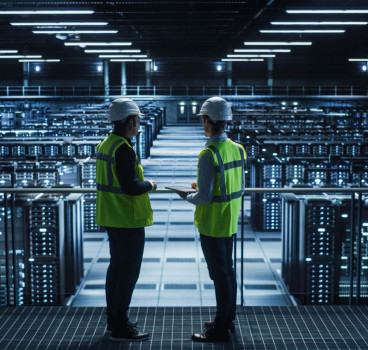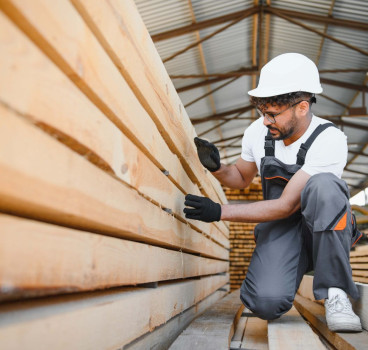Resilient infrastructure - building to withstand the storm
For generations, engineers have been the architects of our built environment, conquering geographical challenges with iconic bridges and shaping cityscapes with towering monuments. However, the spectre of climate change is casting a long shadow, demanding a fundamental change in approach – it is called resilience - a development that requires engineers to future-proof our infrastructure against the ever-more-volatile forces of a changing climate, writes John Ridgeway.
Traditional civil engineering practices, while effective in the past, may no longer be sufficient for the future. Climate change is leading to more frequent and severe weather events like floods, hurricanes and heatwaves. These events can overwhelm existing infrastructure, causing significant damage and disruption.
Rising sea levels are posing a threat to coastal infrastructure, with potential for flooding, erosion and saltwater ingress. Even more worrying - many existing structures were built decades ago and may no longer be able to withstand the additional stresses of climate change.
These factors necessitate a shift towards infrastructure that can not only serve its intended purpose but also adapt to and withstand these growing environmental challenges. Climate change-related disasters can cause billions of dollars in damages, disrupting economies and hindering development. Building resilient infrastructure can save money in the long run by preventing these costly events.
Extreme weather events can also put lives at risk, another reason why we need resilient infrastructure to help protect communities and ensure their safety during and after disasters.
Designing infrastructure to withstand climate change helps to protect the environment from further damage. For example, flood-resistant buildings minimise the risk of damage to ecosystems and wildlife habitats. Resilient infrastructure, designed to endure, also provides a long-term return on investment.
Engineering solutions for a more resilient future
Change is already taking place. Civil engineers are employing a range of innovative solutions to build resilience into infrastructure projects such as flood protection measures. These include building levees, seawalls and storm surge barriers to control rising water levels. Additionally, elevating critical infrastructure like power plants and transportation networks is helping to reduce flood risks.
Structures are now being designed to withstand stronger winds, heavier rainfall and higher temperatures. This involves using stronger materials, improved drainage systems, and enhanced insulation.
We are also seeing natural infrastructure solutions that integrates elements like wetlands, mangroves and green roofs into infrastructure projects. These features can help to mitigate floods, reduce storm surge impacts and improve air quality.
Furthermore, Sensors and data analytics are being used to monitor infrastructure health and predict potential problems. Early detection of issues allows for preventive maintenance and reduces the risk of failure.
What is particularly encouraging is that infrastructure projects are increasingly being developed with input from communities to ensure they meet local needs and address specific vulnerabilities.
The Netherlands, for example, has a long history of living below sea level and has developed sophisticated flood protection systems like the Delta Works. These massive seawalls and storm surge barriers protect millions of people from flooding.
Miami, Florida, USA, is investing in raising roads and seawalls, installing flood-proof pumps and elevating critical infrastructure, while Singapore, a leader in green infrastructure solutions, has introduced an extensive network of green roofs and vertical gardens to manage rainwater runoff and mitigate the urban heat island effect.
Following the devastation of Hurricane Katrina, New Orleans has undertaken a massive infrastructure upgrade. This includes building levees, elevating houses and installing flood protection walls.
Overcoming challenges
While the need for resilient infrastructure is clear, there are challenges that need to be addressed. Building resilient infrastructure can be more expensive than traditional methods. Financing strategies and public-private partnerships are essential for overcoming this hurdle.
Designing and building resilient infrastructure also requires specialised knowledge and expertise. Investing in training programmes and attracting skilled engineers is also crucial. Furthermore, effective data collection and analysis are essential for understanding climate risks and identifying vulnerable areas. Long-term planning that incorporates climate projections are critical.
The need for resilient infrastructure is not a temporary trend - it's a paradigm shift for civil engineering. As climate change continues to alter our planet, the ability to design and build infrastructure that can adapt and withstand these changes will become increasingly crucial.
The good news is that engineers are rising to the challenge. By developing innovative solutions, leveraging technology and fostering collaboration, the civil engineering community is laying the groundwork for a more resilient future.
This future will see infrastructure that adapts to changing conditions. Infrastructure will be designed with flexibility and adaptability in mind, allowing it to evolve as climate patterns shift. This could involve modular designs that can be easily modified or upgraded as needed.
Resilience will not come at the expense of the environment. Sustainable practices and materials will be central to infrastructure development, minimising environmental impact and promoting long-term sustainability.
Most importantly, resilient infrastructure will not be built in isolation. Communities will be actively involved in planning and design, ensuring infrastructure strengthens social connections and fosters a sense of shared responsibility.
Building a resilient future requires a collective effort. By supporting innovative projects, promoting education and training and embracing collaborative approaches, we can all play a role in ensuring our infrastructure can withstand the challenges of tomorrow.
This journey towards resilience is more than just engineering - it's about building a future where communities can thrive, economies can flourish and the environment is protected. As we move forward, the ingenuity and dedication of civil engineers will be instrumental in shaping this resilient future, leaving a lasting legacy for generations to come.
Additional Blogs

What if Building Control went fully digital?
Building control governs structural integrity, fire protection, energy efficiency, accessibility and countless other aspects of design and construction. Historically, this process has been highly...
Read moreWhere most “Smart Buildings” go wrong
Smart buildings are often presented as the ultimate in modern construction - interconnected, efficient, intuitive and driven by real-time data. They promise lower operating costs, reduced energy use,...
Read more

The future of facilities management starts at RIBA Stage 0
Facilities management has traditionally been treated as a discipline that only becomes relevant once a building is handed over. At that point, FM professionals inherit decisions made months or years...
Read more